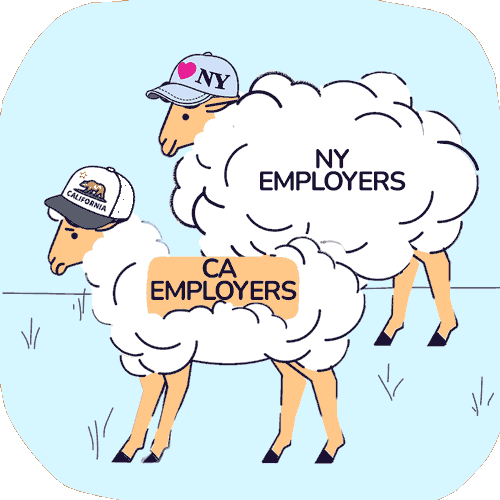CA Employers: Broken Workers' Comp Costs 2X National Median

In California, the frictional administrative expenses of caring for an injured worker cost employers almost twice the national median.
According to a report from the Workers’ Compensation Insurance Rating Bureau (WCIRB), it costs 49¢ to deliver $1 worth of workers’ comp benefits to a California injured worker, compared with the national median of 26¢.
Considering that closing a California worker’s claim also takes seven years (more than twice the national median), the depth of California’s dysfunction is appalling. Unfortunately, that dysfunction is also obscenely profitable.
As we continue to remind readers, those 49¢ don’t just vanish into the ether—much of it fills the pockets of various businesses, often owned by private equity, that thrive on employers’ workers’ comp dollars. Frictional costs equal profit for everyone from Third-Party Administrators (TPAs) to bill reviews to network discount peddlers (and entities that perform various combinations of those services).
Doctors have been blamed for California’s spiraling workers’ comp costs for decades. However, private equity is presiding over this costly friction, which is paying off—as exemplified by the Carlyle Group’s $6.7 billion investment in TPA Sedgwick, which yielded a $13 billion valuation for Sedgwick in just six years despite the TPA’s abysmal track record of non-compliance and ineptitude.
Friction, inefficiency, and administrative waste harm injured workers while fueling profits for private equity firms and the workers’ comp-related businesses they own.
CA: Injured Worker $0.49 “Frictional” Costs
According to the WCIRB’s 2024 State of the System report, California continues its streak as one of the most expensive, least efficient states in caring for injured workers. Per the report, the cost to deliver a single dollar’s worth of treatment and benefits is:
- $0.01 (a single cent) for a Medicare patient
- $0.11 for a private group health insurance patient
- $0.26 for an injured worker in the median American state
- $0.49 for an injured worker in California
For many, many years California employers and legislators have been told the state’s workers’ comp costs were driven by nefarious providers and malingering employees. This WCRIB visual reveals the true grift: Frictional Profit.
And where is all this money going? According to the report’s endnotes, these “frictional” costs include
- Insurer claims staff
- Utilization Review (UR)
- Independent Medical Review (IMR)
- Independent Bill Review (IBR)
- Medical-Legal costs
- Attorney fees
- Medical Provider Networks (MPNs)
The above expenses, many of which represent demonstrably wasteful, unnecessary roadblocks to injured workers’ care and providers’ correct reimbursement, are loosely grouped in the WCIRB report under nebulous terms like Allocated and Unallocated “Loss Adjustment Expenses” (ALAE/ULAE) and “Medical Cost Containment Programs” (MCCP).
In fact, the situation may be even worse than the WCIRB reports.
As documented by multiple outlets (including daisyNews), the WCIRB’s “data” are unverified and entirely self-reported by insurance companies that are members of the WCRIB. This means that the amounts spent on frictional costs could likely be even higher than the WCIRB claims.
CA: Frictional Profits Soar While DWC Watches
Conveniently, private equity firms own various workers’ comp-adjacent vendors that churn out profits by increasing frictional costs and skimming providers' reimbursements for treating injured workers. These include:
- Bill review entities
- Preferred Provider Organizations (PPOs) and other network discount contracting entities
- Medical Provider Networks (MPNs) and “entities providing physician network services”
- Utilization Review Organizations (UROs)
- Credit card companies that enjoy fees for treatments paid with Virtual Credit Cards (VCCs)
- Pharmacy benefit managers (PBMs)
Unfortunately, the inaction of the California Division of Workers’ Compensation (DWC) represents a passive endorsement of private equity’s grift.
As we’ve explained before, the longer an injured worker remains injured, the more potential profits these side-kick vendors owned by private equity can reap. Rather than helping injured workers obtain actual care, the DWC does little or nothing to exercise the necessary oversight to speed their recovery.
It should not surprise anyone that half of every dollar spent on workers’ comp is not spent on treatment. While private equity’s profits flourish, the DWC refuses to halt either of the following “Cost Containment” programs that prevent injured workers from accessing care:
- The dysfunctional and opaque UR system, which denies or defers medically necessary and appropriate care based on questionable (or downright spurious) grounds
- Rampant MPN abuse resulting from an ungoverned MPN system
While doctors and injured workers are blamed for California’s comp spiraling costs and dysfunction, private equity (with DWC assistance) is fleecing California’s employers. However, injured workers are the true victims of the 49¢ grift as employers’ workers’ comp dollars are shoveled into private equity bank accounts.
daisyBill makes treating injured workers easier, faster, and less costly. Request a free demonstration below.
REQUEST DEMO
DaisyBill provides content as an insightful service to its readers and clients. It does not offer legal advice and cannot guarantee the accuracy or suitability of its content for a particular purpose.







